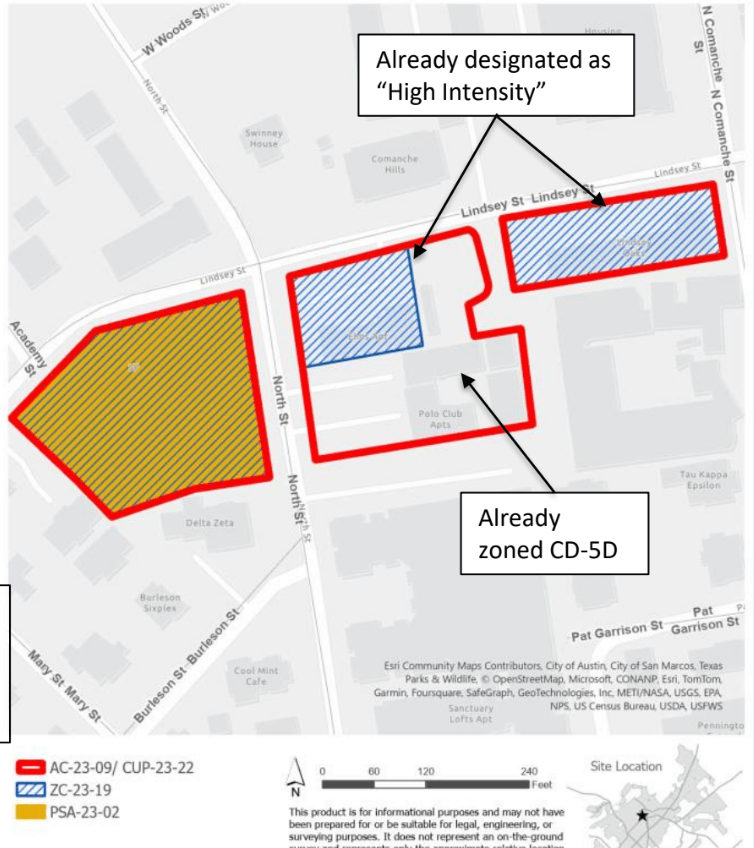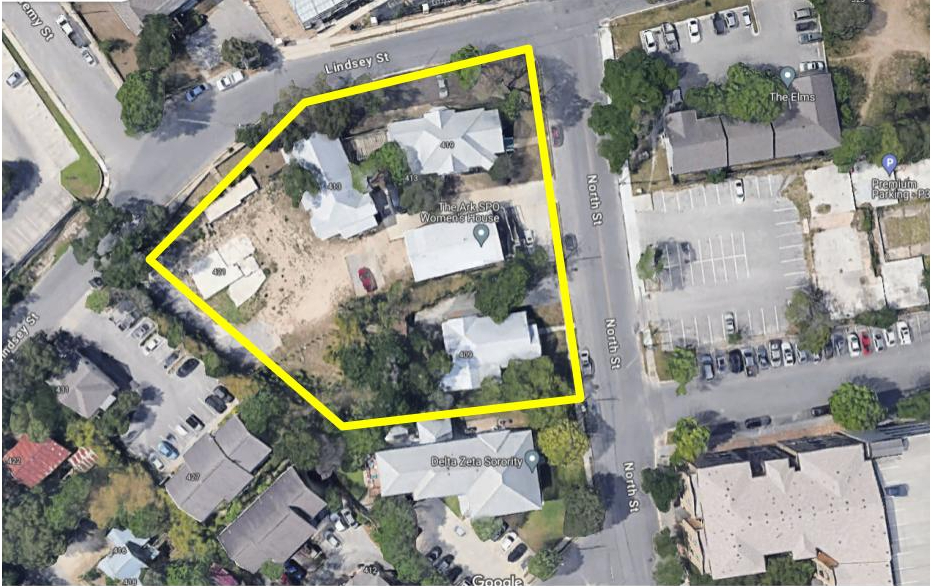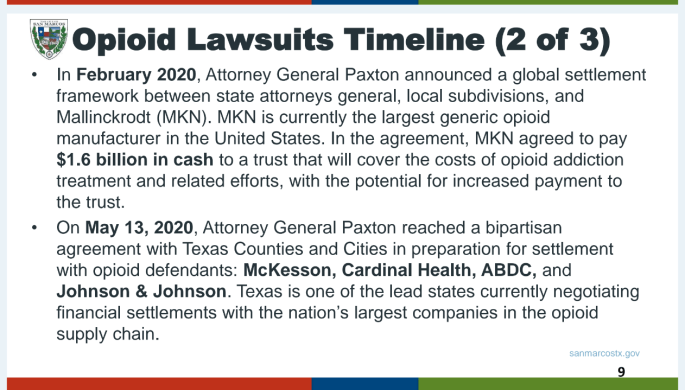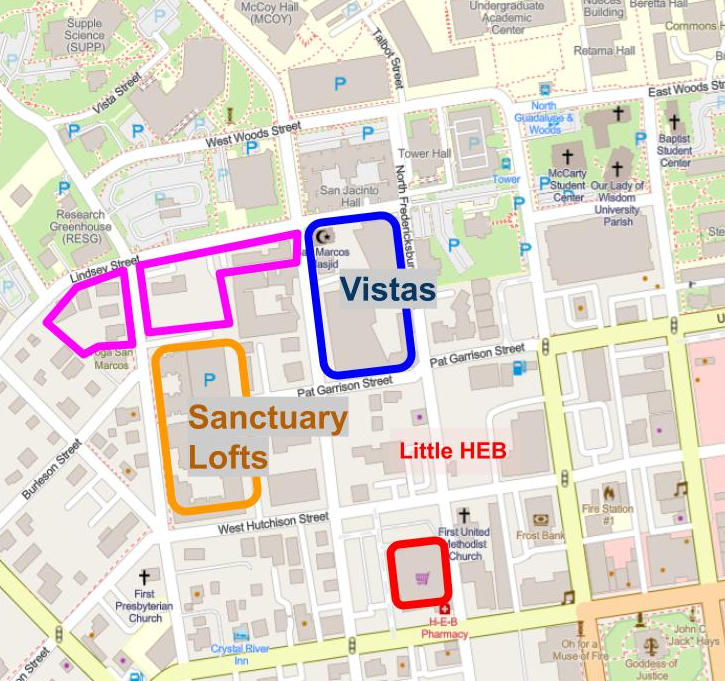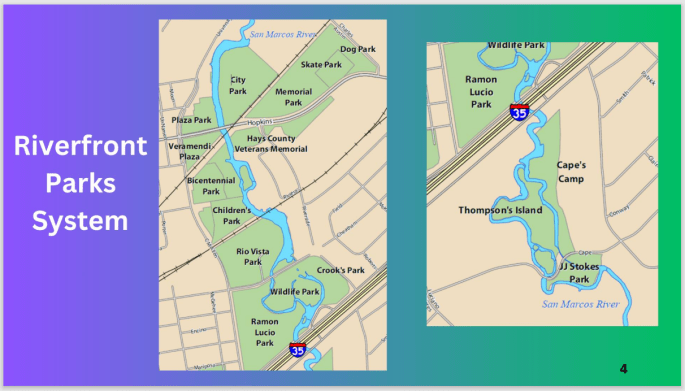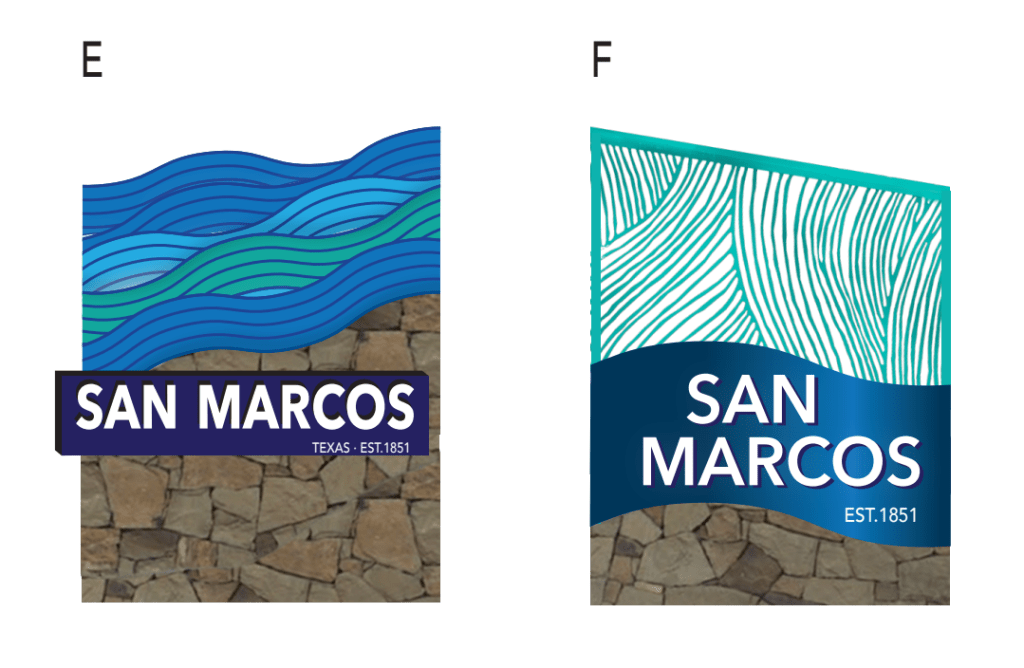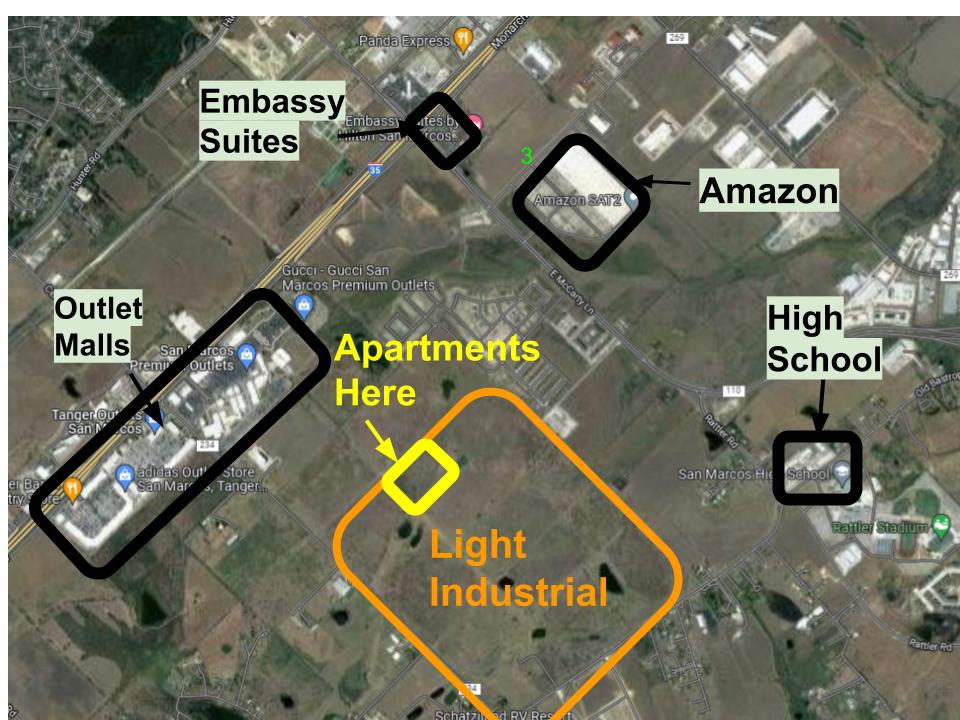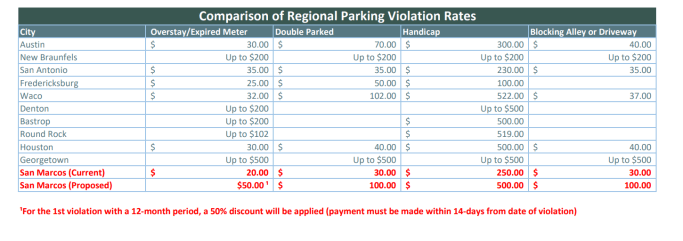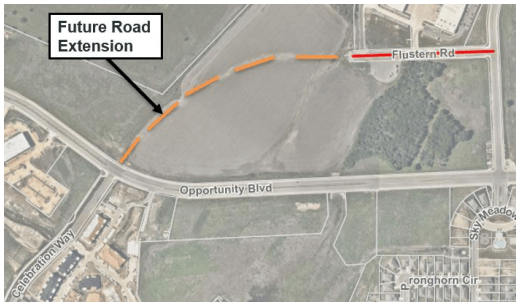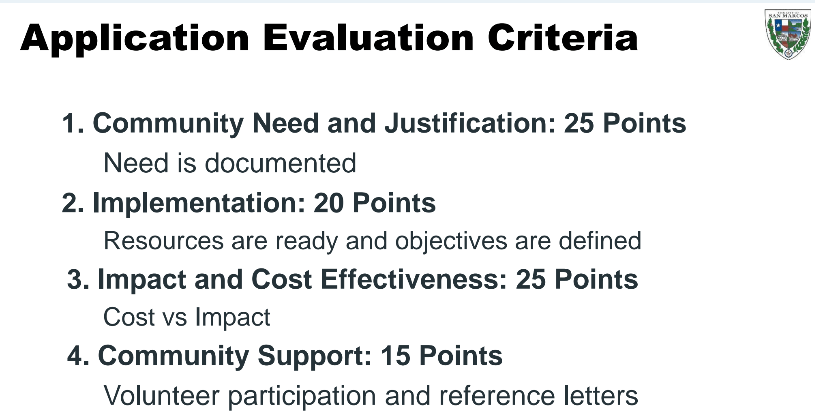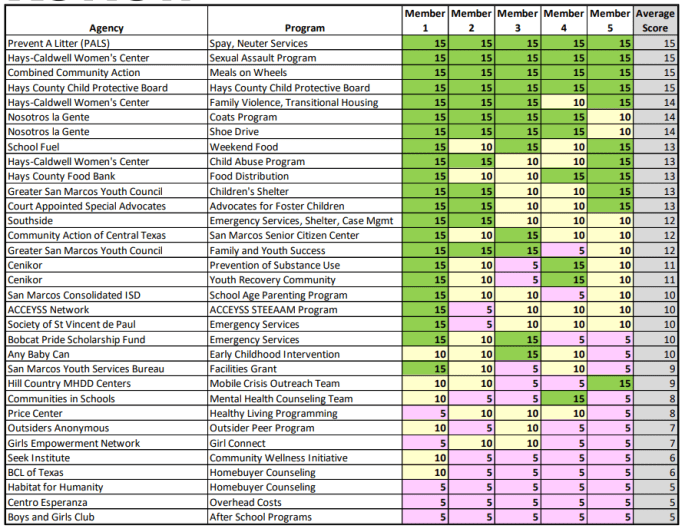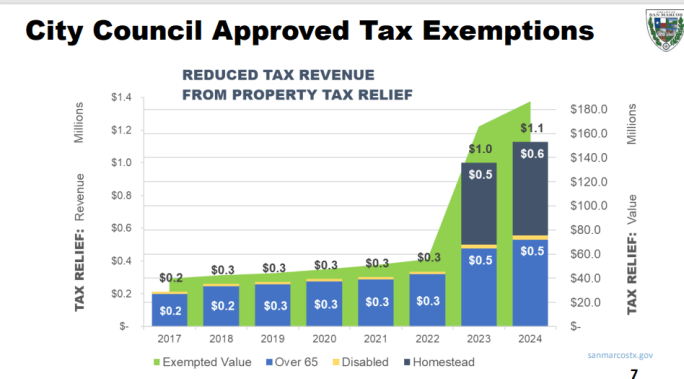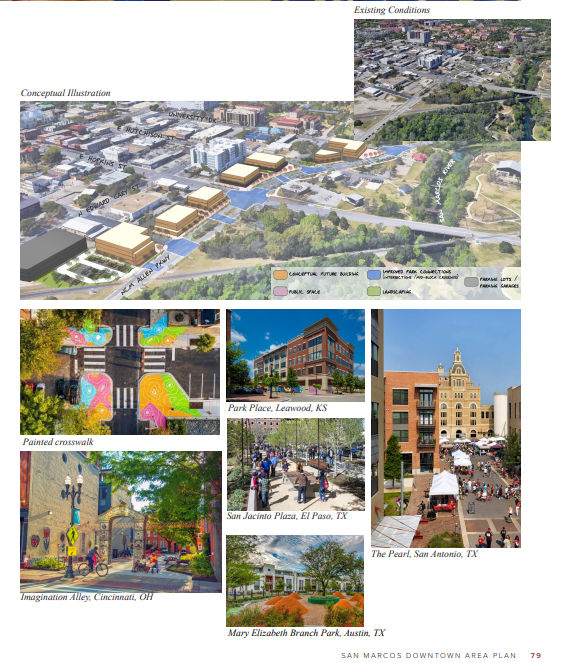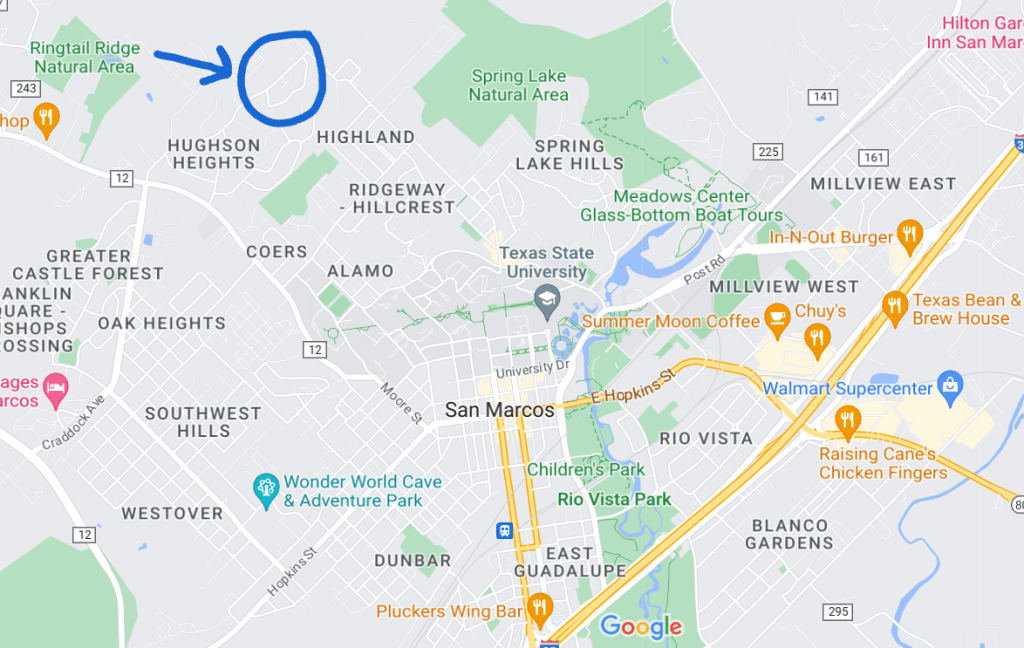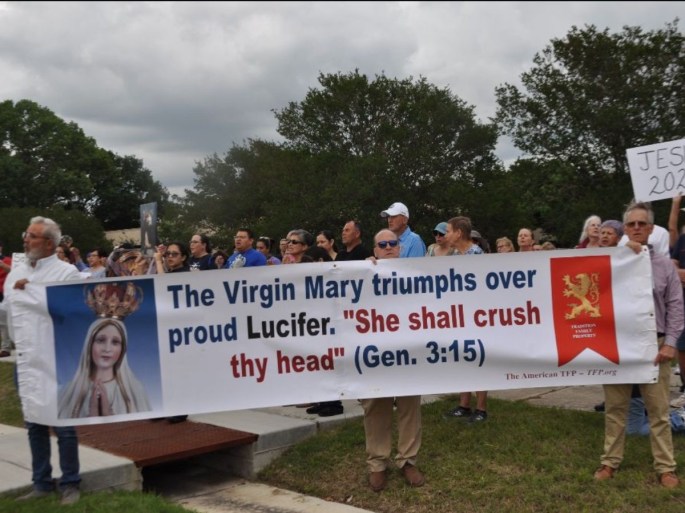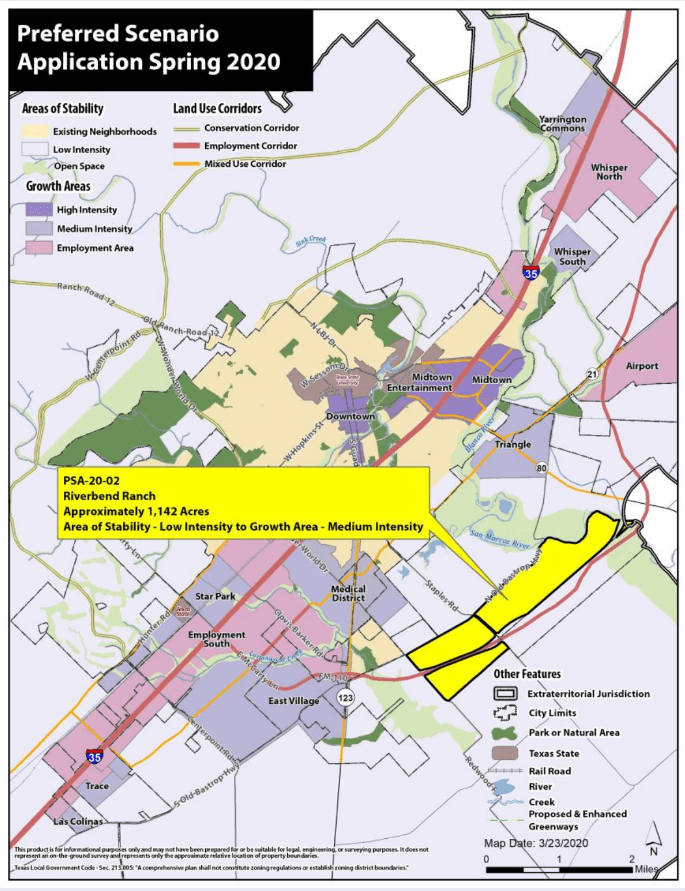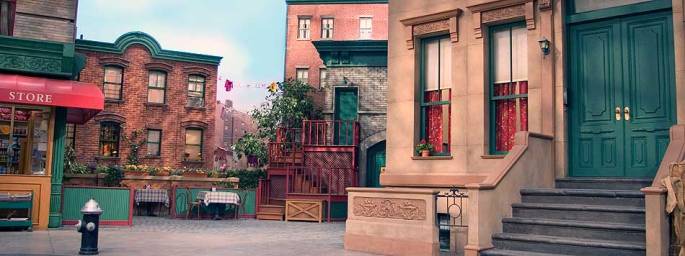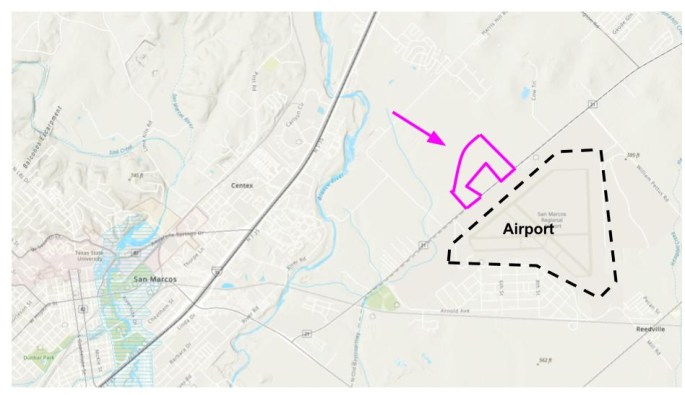Citizen comments:
Let’s organize this by topic.
- Calling for Council to pass a resolution for a ceasefire in Gaza.
There were 9 speakers on this topic. That’s a LOT! Especially because different activists have shown up pretty much every meeting since January.
One speaker said she’d met with Mayor Hughson about this. Apparently Jane’s response was, “What good can little old San Marcos do?” and worrying over internal division. It’s easy to see where Jane is coming from – why bother going out on a limb, when it doesn’t benefit the San Marcos directly?
But the thing is, it does matter to people who live here – they’re showing up and telling you this, over and over again – and they’re correct that US taxpayers are contributing towards this is a horrific bloodbath. The reason that cities should call for a ceasefire is to amplify the voices of its citizens towards the federal government. (It’s not just San Marcos. 100 cities have done so already and here’s a partial list from February.)
And look: the grassroots pressure is working – Biden’s relations with Netanyahu are getting increasingly frosty. It’s going extremely slow, but Biden is responding to public pressure.
Here’s the other thing: ignoring this many speakers is a REALLY bad look. Why not call for a ceasefire? It’s very easy and respects the voices in your community.
……
Fast-forward six hours. It’s almost midnight and everyone is tired. At the very end of the meeting, there was one person left for Q&A. She asked Council, “Would you vote yes for a ceasefire resolution, if it were before you right now?”
Alyssa Garza said yes, of course.
As the question hung in the air, the lawyer spoke up and said something like, “This item is not on the agenda for discussion, and it’s most likely a violation of the Texas Open Meetings Act if you all discuss it in public, without it being posted with advance notice so that anyone can attend.”
Jane Hughson said she’d wait to discuss it until it is properly on an agenda. (Guess who controls the agenda?)
Shane Scott shrugged and said sure – he’d sign anything that has the word “peace” in it.
Mark Gleason said he’d vote no, this is a local government and it’s a waste of taxpayer money and everyone’s time to weigh in on international matters.
Saul Gonzales, Jude Prather, and Matthew Mendoza just stayed quiet, and let the moment pass.
- One speaker talked about civil discourse, and how it’s deteriorated. The claim was that pre-social media, speakers used to hug and mingle in the hall, and then put their differences aside after they spoke.
But now they get skewered ruthlessly online. It’s very nerve-wracking to talk at City Council, and the rude treatment online doesn’t help. Threat of retaliation, intimidation, vitriol, even from people you might otherwise agree with. We should support the people who speak up at council and respond civilly.
So I am probably part of the online crowd being referred to here? I feel ambivalent about this.
It does take courage to speak at city council meetings! We need people in the community willing to step up and present their point of view. If I’m over here jeering and mocking from the cozy sanctity of my blog, it could make people less likely participate.
But on the other hand, speakers are advocating for a particular policy outcome. They are trying to tip how an issue plays out. That affects other people. If I think they’re peddling crap, I want to explain this to my readers, because I’m also advocating for particular policy outcomes.
(Ok fine, but do I have to be so mean about it? I try not to be mean exactly, but it’s kind of lifeless and dull to write a blog without any kidding around. But I do try to stick to ripping on people’s positions and arguments, and never make personal attacks.)
- Lindsey Street apartments. This is what we’re spending nearly all the meeting on. Let’s not make that part even longer than it needs to be.
Items 8-11: Those dang Lindsey Street Apartments.
Quick backstory:
Should we allow student apartments here?

The street dividing the two pink parts is North Street, and it’s also the official boundary for downtown.
So we end up having separate conversations about the West Half, the pentagon on the left, and the East Half on the right.
What did P&Z say?
For the West Half: P&Z said “Get outta here, ya punk.” No to everything that the developer asked for. (Discussed here.)
For the East Half, P&Z hedged:
- They agreed to rezone it CD-5D, instead of the mishmash of antiquated zonings that we don’t use any more.
- They agreed to permit it for Purpose-Built Student Housing.
- They said no to 7 stories of height.
Last week, Council discussed the property west of North Street, but didn’t vote.
The Citizen Comments:
Look: my whole shtick is that I care about all the little San Marcos issues, right? Every two weeks I get down in the weeds with you. And yet …I just don’t care about these apartments. At all. I just don’t. I can’t muster any enthusiasm either way.
But other people do! So let’s get into it. First, public comments:
Arguments that I just don’t get:
- Student housing is full of mold, foundational issues, pest infestation, water problems, and other maintenance issues. Complexes won’t address these issues.
- Halt any developments that might worsen gentrification in San Marcos.
- Do not build more student housing without resolving the existing problems of student housing.
- RBB leasing process is exploitative because students view an immaculate show apartment and not the actual apartment that they end up leasing. When students move into their actual shitty new digs, they lack recourse. They must document every issue within 48 hours or be held liable. This is predatory and manipulative.
- RBB undermines student retention at Texas State.
- 90% of the leasing-related conflicts that go to the attorney for students at Texas State involve RBB. [Note: you can’t evaluate this claim unless you know the percent of Texas State students who live in RBBs.]
- Roommate matching programs are problematic. Sometimes students get placed with families.
- Students are asked to sign leases up to 10 months ahead of time. This is predatory.
- Housing is a human right. Therefore we are calling for a 5 year moratorium on RBB housing. This would allow us to focus on fixing the existing problems.
- Restart the city subcommittee on student housing.
- Implement a variety of housing options for low-income residents.
- Invest in code enforcement.
- There is a housing shortage for students and rents have risen 40% from pre-pandemic levels.
- This is a Texas State problem, not a San Marcos problem.
- We are overbuilt on student housing. There are 45 student complexes in town. If you crunch the numbers, we have 20,000 RBB bedrooms, and only 13,000 students trying to find off-campus housing. The further away from campus you get, the more vacancies there are.
- There is a housing shortage for students and rents have risen 40% from pre-pandemic levels. (I don’t understand how this is an argument against.)
- Riding shuttles isn’t that bad.
- This is just like the Blackland neighborhood in Austin.
Look, I’m not trying to be difficult here. I’m just mystified by the arguments above. A lot of them are legitimate problems that need solving. But voting against this complex doesn’t solve any of them!
I suppose the argument is that Council should vote “no” as a protest vote? But against who, themselves? They already have the power to prioritize these issues. You can just directly advocate for council to tackle these issues.
Here’s our city website on tenant resources. Council could spend a lot more money supporting tenants, enforcing code, and combating delinquent leasing agencies and landlords.
Arguments that at least seem relevant to me:
- Do not displace residents who are currently living in affordable housing.
- This will be a domino effect. If this is approved, then next will be the land next it it, then next to that, and eventually it will cross Moore street and eat away the historic neighborhood.
- There have been occasions when apartments weren’t finished being built, but they’d already leased units to students, and so when August came around, the students had nowhere to live.
- This will be sold to the University immediately, and we’ll lose the tax revenue, just like we did for Santuary Lofts and Vistas.
- Historic houses need preservation.
- Traffic and parking will get worse
- Flooding will get worse
The city and the developer end up working out conditions that sort of address most of these. We’ll discuss this further below.
Arguments in favor:
- we have student housing, but not enough within walking distance of campus. All the complexes close to campus are full.
- Good spot for students
- Tax money is nice.
- They’re willing to make concessions on some of those points above.
[Technical note: Jude Prather recused himself last week. Since then, he checked with the lawyer and with the Ethics Review Committee. Everyone gave him a thumbs’ up to participate with a clean conscience. So he’s back in the game.]
Council dives in:
Jude: I’m all in! What a kind and generous developer! I love it.
Saul: Can you guarantee that you won’t turn around and sell this to the University?
Developer: I talked to the bank. They won’t guarantee my loan if I sign something that says I won’t sell it. The reason is that if I go bankrupt or die or something, the bank wants to be able to sell to the highest bidder. But they said that they could give me 5-7 years. For the first 5-7 years, I could sign something agreeing not to sell to any entity that doesn’t pay taxes.
Saul: I’m worried about traffic.
Developer. We did a traffic study. Students work weird hours at jobs like serving and bartending, and walk to class, so they’re actually not contributing to rush hour traffic. They don’t tend to have 9-5 jobs.
Saul: Is this going to be affordable?
Developer: Not really. But there are about 4-5 families that currently live there, and I could extend affordable leases to them in the new building.
Matthew: I protect the single-family neighborhoods. My constituents keep telling me “keep the students way over there!” And students deserve options!
At one point Matthew says, “I never feel right about denying anybody a place to live.” Can we put that on a t-shirt for the next time he starts talking about occupancy restrictions?!?
“I never feel right about denying anybody a place to live.”
– Matthew Mendoza, 4/2/24, 1:53:55
Mark Gleason: This doesn’t encroach on the historic district. It’s a great place for students. The tax dollars will help. He’s on board.
He asks if we can improve some of the sidewalk gaps in this area, while we’re at it? This is a good thought!
Finally, Mark’s angry that people invoke “flooding” as a weapon to tear down projects they don’t like, because it cheapens the real experience that he and so many others went through. Flooding is not an issue here, because it’s already completely paved. Making it higher doesn’t change the flood-math. (This is correct.) However, speakers kept bringing up the flood risk throughout the night, and eventually Mark lost his temper and snapped at them.
Jane Hughson: Can’t bring herself to do CD-5D west of North street. What about a lesser zoning like ND4? CD5?
Answer: ND4 has a lot of restrictions. Their architect couldn’t get more than 55 units in. CD-5D allows for 100 units.
How about CD5? It’s nearly the same as CD-5D, but it doesn’t have the extra D, which literally stands for “Downtown”. This allows Council to say that technically, they didn’t enlarge downtown. They just switched to the non-downtown kind of high intensity zone.
They settle on CD-5D on the east half and CD-5 on the west half. There are some differences in design standards and parking requirements, which we’ll get to in a moment.
….
For a five hour meeting, remarkably little happened. It was incredibly repetitive. So I don’t want to lay it out chronologically because I’d put myself to sleep. Let’s see if I can boil this down enough.
List of Concessions
Tentatively, here’s what the developer is agreeing to do.
- The development would be on the rental registry.
This came from P&Z and gets no discussion. No problem.
- There are two moderately old, cute houses and one very cute old house on the west side:

The developer is planning on having them moved elsewhere. Right now they have two parties that are interested in relocating them.
If both of those fall through, the developer agrees to a 1 year demolition delay instead of a 6 month demolition delay, to give time for another person to come forward.
3. All the normal code requirements still apply. This is normal.
4. Parking, part 1.
Should a parking space be included in your rent, or should we allow them to charge an additional fee for parking?
The argument goes like this: in places like The Parlor, students don’t use the garage because they don’t want to pay a monthly parking fee. Then they clog up all the parking spaces that the local businesses need for their customers. Whereas if the parking garage is already included to residents, then students will use the garage and get out of the street spots.
The developer has a ridiculous argument: we don’t want to disincentivize students who may not want to bring a car to campus! Because we’re environmentalists!
The actual reason is that it drives up their rates, of course, and gives them a competitive disadvantage. Council votes and lets the developer off the hook on this one.
5. If the place is pre-leased and construction isn’t done, you have to provide housing and let tenants out of the lease. (This is true for all new construction, a change we implemented because it has happened before.)
6. Parking, Part 2.
How many parking spaces should they be required to build?
The East Half is CD-5D. In that zone, you have to build 1.05 spaces per bedroom. The West half is CD-5, and in that zone, you have to build 1 spot per unit, which is way less.
If you’re building a parking garage, each space costs $30K (according to the developer) so they want to provide as little as possible. They were already discussing parking breaks, before CD-5 was on the table.
Now everyone’s going to crunch the numbers, and finalize this next time.
- The CUP will expire in 3 years if they don’t make progress. (This is also standard)
- The complexes will offer both Rent By the Bedroom (RBB) and conventional leases on both sides.
Jane asks: Will the conventional leases be priced less than RBBs?
In other words, if you’re charging $1000 per bedroom, and $3000 for a 3-bedroom apartment, you’re not actually offering a conventional lease that anyone will ever sign.
Developer: Of course we wouldn’t do that! Of course I am just saying random stuff and who knows what I’ll actually do!
- They have to build to the silver level in the LEED green building program.
- On displacing current tenants and tearing down affordable housing:
Current tenants will given 6 months advance warning .
Up to 5 families will be given a comparable rent in the new development. (Of course, they’ll have to find other housing for the 3-4 years, while it’s being built.)
12. West of North Street:
They will cap it at 4 stories. There will only be 1, 2, and 3 bedroom units. At most 80% impervious cover on the ground.
This is all an effort to make the west half less student-y and more general public.
Typically in student housing, there’s one bathroom per unit. In non-student housing, there isn’t. Jane Hughson asks what bathroom ratio he’s thinking for the west non-student side? The developer admits 1 bathroom per bedroom. (More clues that this is just all going to be student housing. Which is fine with me.)
13. On selling to Texas State:
Developer will not sell the property to a non-tax-paying entity for 7 years. The clock starts running at approval, not occupancy.
14. West of North Street will not be designed and marketed to students. It is not permitted as Purpose Built Student Housing. Students can obviously still live there, but the developer has to pretend that it’s regular housing.
…….
HOWEVER! This list of goody concessions is only available to Council if Council agrees to let him go up to 7 stories on the east side. And P&Z said no to this.
What would this look like?
Here’s the city staff’s slides, showing the heights nearby:

That first one is if you’re standing at Texas State, looking south.
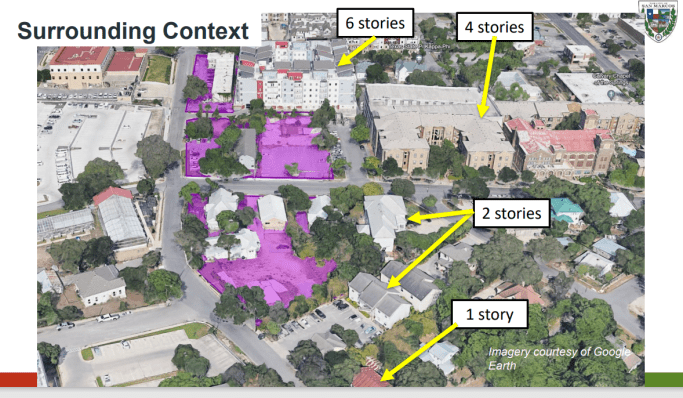
Here you’re standing on the west, looking east. Campus is on the left.

This is similar – you’re standing southwest, looking northeast. Campus is on the top left corner.
Here’s the developer’s mock-up of a 7 story building:

This is the view if you’re standing on the west, looking east, with campus on your left again. Currently the 5 story mock-up in the foreground will actually be 4 stories.
I thought Council would balk at the 7 stories, but they zipped through it and passed it, 5-2. Of course, it was past 11 pm at that point. Saul Gonzales and Jane Hughson voted against it.
So here’s where it stands:
- The developer got the high intensity PSA they needed on the west side.
- The developer got CD-5 on the west, but not CD-5D. This is a meaningless distinction that allows Council to say that they stood firm and refused to extend downtown.
- Council postpones the permit for Purpose Built Student Housing until next time. This is where everyone agrees to the 14 conditions listed above. Everyone can sleep on it and think it over for an extra week or two before signing off on it.
- The developer got their 7 stories on the East half, and 4 stories on the West.

